Gortyna: Unraveling Minoan Crete’s Secrets
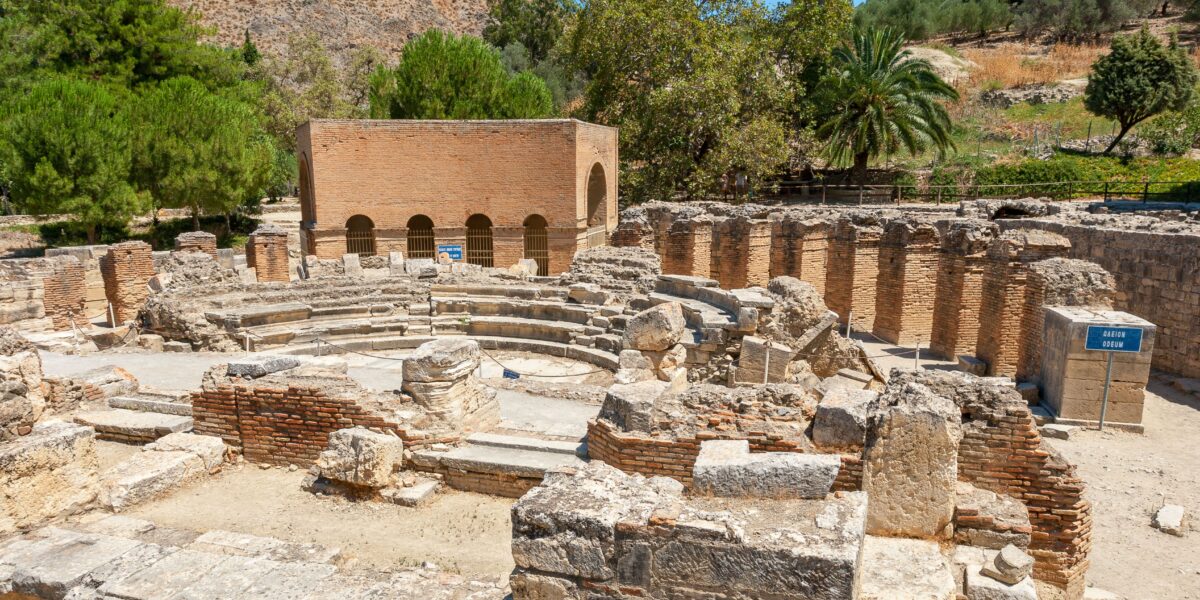
Gortyna, an ancient city located in the valley of Messara in Crete, is a treasure trove of history, art, and mythology.
As one of the most significant archaeological sites in Greece, Gortyna offers a glimpse into the vibrant Minoan civilization that once thrived on the island. From its early settlements in the Neolithic era to its rise as the Roman capital of Creta et Cyrenaica, Gortyna has witnessed the ebb and flow of civilizations throughout the ages.
Join us as we unravel the secrets of Gortyna, explore its ancient ruins, decipher the Gortyn Code, and delve into the captivating tales of Greek mythology. Discover the hidden wonders of Minoan Crete and the enduring legacy of Gortyna.
Discovering Gortyna: A Prelude to Minoan Civilization
Before we delve into the significance of Gortyna in Minoan history, let’s take a step back and explore the origins of this ancient city. Gortyna, originally known as Larissa and Cremnia, was a powerful city-state in ancient Crete. It played a crucial role in the league formed with Knossos, another prominent Minoan city. Together, they dominated the island, reducing all of Crete under their power. However, as tensions rose between the two cities, they found themselves engaged in constant hostilities. Gortyna’s strategic location in the valley of Messara and its proximity to the Libyan Sea made it a key center of trade and culture in ancient Crete.
The significance of Gortyna in Minoan history
Gortyna holds immense significance in the history of Minoan civilization. As one of the most influential city-states in ancient Crete, Gortyna was at the forefront of cultural, economic, and political developments. Its strategic location near the Mediterranean Sea allowed for thriving trade networks and cultural exchanges with other ancient Greek cities.
The archaeological site of Gortyna provides valuable insights into the daily life, customs, and achievements of the Minoans. Excavations have unearthed remnants of ancient structures, including temples, palaces, and public spaces. These architectural marvels speak volumes about the advanced engineering and artistic skills of the Minoans.
Gortyna’s importance extends beyond its physical remains. The discovery of the Gortyn Code, Europe’s oldest law code, showcases the sophisticated legal system that governed Minoan society. This code provides a unique window into the social, political, and economic organization of ancient Crete.
Early excavations and their impact on our understanding
The early excavations of Gortyna, initiated in 1884 by the Italian School of Archaeology at Athens, have had a profound impact on our understanding of ancient Crete. These excavations revealed the vast scope of the Minoan civilization and brought to light countless artifacts and structures that shed light on their way of life.
The most significant find from these excavations was the discovery of the Gortyn Code in 1884. This ancient law code, inscribed on large stone slabs, is the oldest and most complete example of ancient Greek law. It provides detailed insights into the legal system, social norms, and cultural practices of the Minoans. The deciphering and study of the Gortyn Code have greatly contributed to our understanding of ancient Greek society. In addition to the Gortyn Code, the excavations have unearthed various other artifacts, including clay figurines, pottery, and architectural remnants.
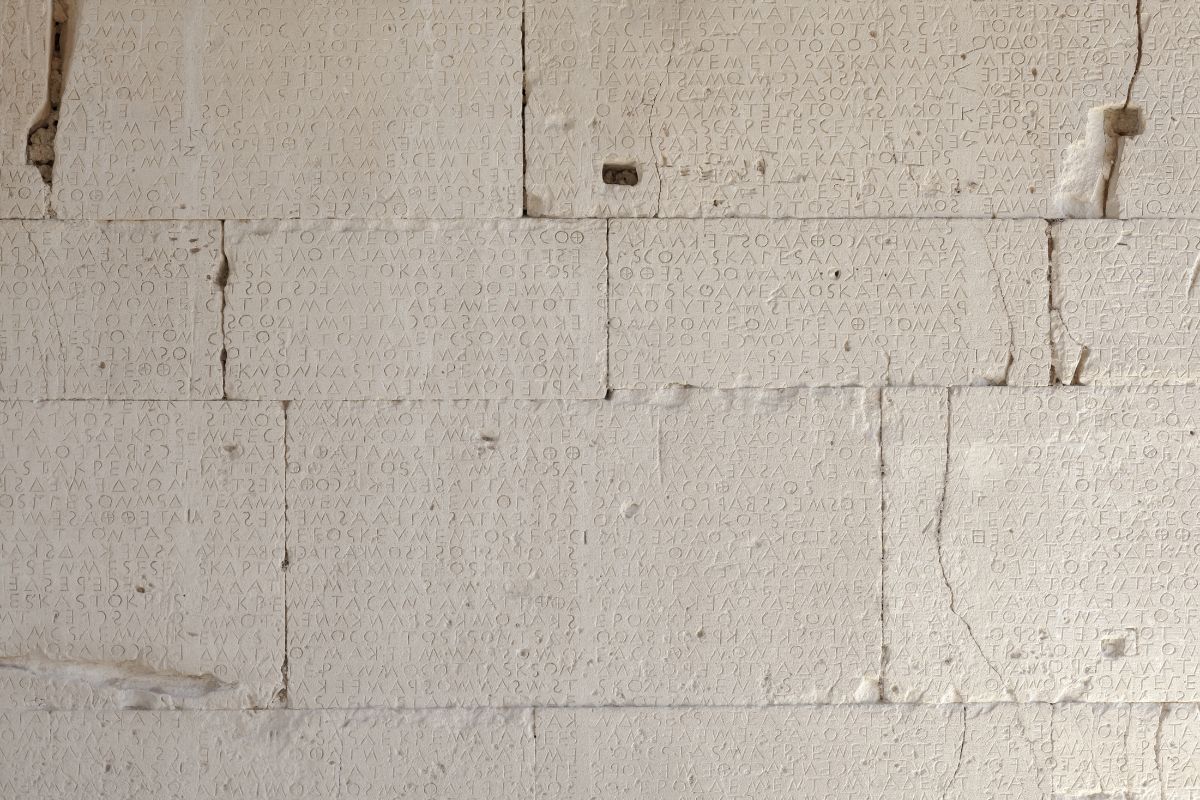
Deciphering the Past: Inscriptions and Artifacts
At Gortyna, the past comes alive through deciphering inscriptions and studying ancient artifacts. These invaluable sources provide insights into the daily life, social structure, and cultural practices of the Minoans.
The Gortyn Code: Europe’s oldest law code
The discovery of the Gortyn Code in 1884 was a groundbreaking moment in the study of ancient Greek law. This ancient legal document, inscribed on large stone slabs, is the oldest and most complete example of a code of ancient Greek law. It provides valuable insights into the legal system and societal structure of the Minoans.
The Gortyn Code covers a wide range of legal matters, including family law, property rights, and criminal offenses. Written in the Dorian dialect, it offers a glimpse into the language and cultural practices of the Minoans.
Studying the Gortyn Code allows us to understand the rules and regulations that govern Minoan society. It provides evidence of a complex legal system and highlights the importance of law and order in Minoan civilization.
Artistic expressions: Frescoes and pottery
Artistic expression was an integral part of Minoan culture, and Gortyna has provided a wealth of evidence in the form of frescoes and pottery.
Frescoes found at Gortyna depict scenes from classical Greek mythology, showcasing the Minoans‘ deep connection to these ancient stories. These vibrant and detailed paintings offer insights into the Minoans‘ beliefs, values, and artistic techniques.
Pottery, another important artistic medium, also abounds at Gortyna. The Minoans were known for their exquisite pottery, which often featured intricate designs and motifs. These vessels served both practical and decorative purposes and provide a glimpse into Minoan craftsmanship and cultural practices.
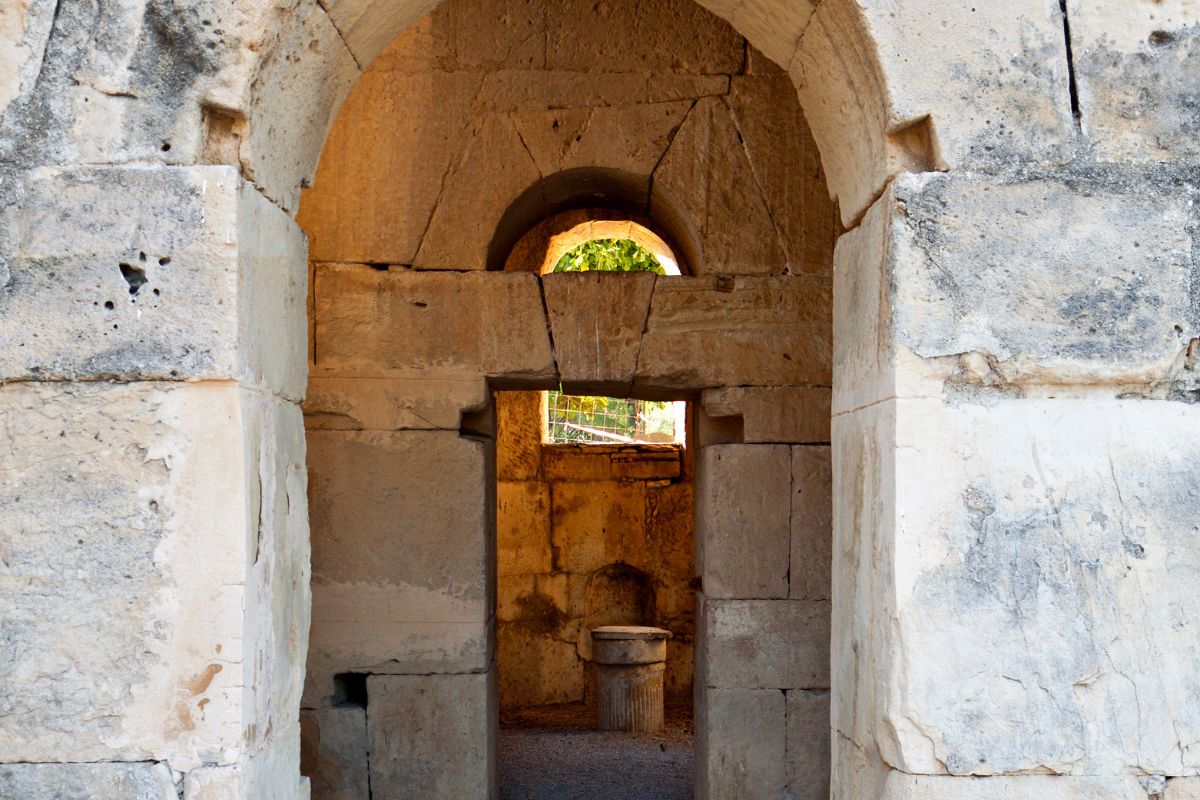
Myth and Legend: The Connection to Ancient Deities
The connection between myth, religion, and history at Gortyna adds a sense of wonder and mystique to this ancient city, making it a fascinating destination for those interested in ancient mythology and culture.
The tale of Europa and Zeus: Mythology meets history
According to the myth, Europa, a princess of Phoenicia, caught the eye of Zeus, the king of the gods. Disguised as a bull, Zeus abducted Europa and brought her to the island of Crete.
It is said that Gortyna was the site where Zeus, in his transformed state as a bull, had an affair with Europa under a plane tree. This connection between Gortyna and the myth of Europa and Zeus adds a sense of mystique to the ancient city.
Religious practices and their societal implications
Religious practices played a crucial role in the societal structure of the Minoans, and Gortyna was a center of religious activity. The rituals and ceremonies associated with ancient deities had deep societal implications, shaping the everyday lives and cultural practices of the Minoans.
The Minoans worshiped a pantheon of gods and goddesses, each associated with different aspects of life. Their religious beliefs permeated all aspects of society, from governance and law to art and architecture.
The religious rituals performed at Gortyna served as a means of communication with the gods, seeking their favor, protection, and guidance. These practices fostered a strong sense of community and unity among the Minoans, reinforcing shared values and beliefs.
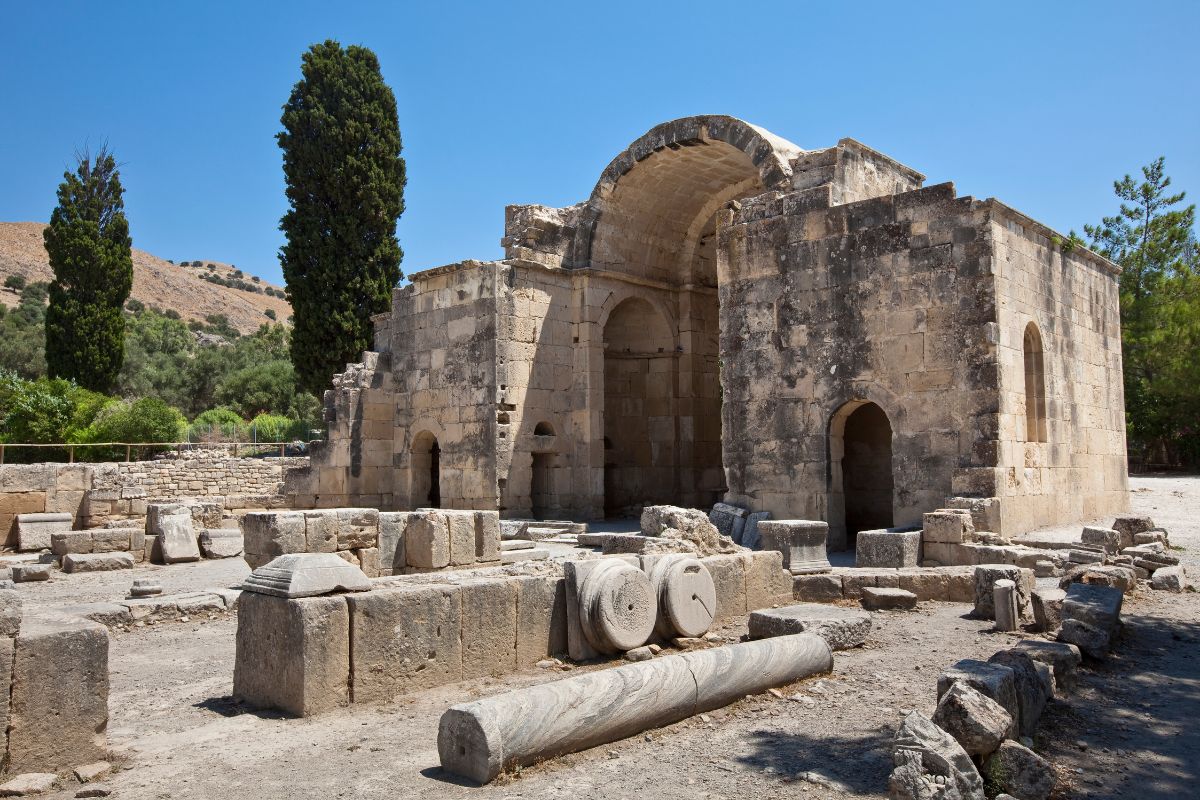
Gortyna Through the Ages: From Peak to Decline
Gortyna’s history is marked by periods of prosperity and decline, reflecting the ebbs and flows of ancient civilizations. From its early settlements in Neolithic times to its peak during the Minoan and Roman periods, Gortyna witnessed the rise and fall of empires.
During the Minoan era, Gortyna was a powerful and prosperous city-state, dominating the island of Crete. It served as a cultural, economic, and political center, showcasing the achievements and sophistication of Minoan civilization.
However, Gortyna’s fortunes declined over time. The city was eventually destroyed by invading Arab forces in the 9th century AD, marking the end of an era. Gortyna’s ruins now stand as a testament to its past glory, inviting visitors to explore the remnants of a once-thriving civilization.
The Roman era: Gortyna as the capital of Crete
During the Roman era, Gortyna rose to prominence as the capital of Crete. Showcasing its political and cultural significance in the region. The Roman Empire recognized the strategic location and importance of Gortyna, which led to its development and transformation into a thriving city. Gortyna became the center of Roman rule in Crete and the joint province of Creta et Cyrenaica. Its alliance with the Romans allowed Gortyna to avoid the fate suffered by many other Cretan cities during the invasion by Quintus Caecilius Metellus Creticus in 68 BC. The city continued to prosper under Roman rule, and remnants of Roman architecture and infrastructure can still be seen today in the archaeological sites of Gortyna.
Byzantine and Venetian influences on the city
Gortyna’s history is not limited to the Roman era; it also witnessed the influence of Byzantine and Venetian cultures. During the Byzantine period, Gortyna became the capital of a separate province in Crete. The Byzantine influence can be seen in the architectural styles and cultural traditions that were adopted and maintained in the city. Later, Gortyna fell under Venetian rule, adding another layer of cultural influence. Venetian architecture, such as fortresses and churches, can still be found in the city. These influences have shaped the city’s character and left a lasting impact on its architectural and cultural heritage.
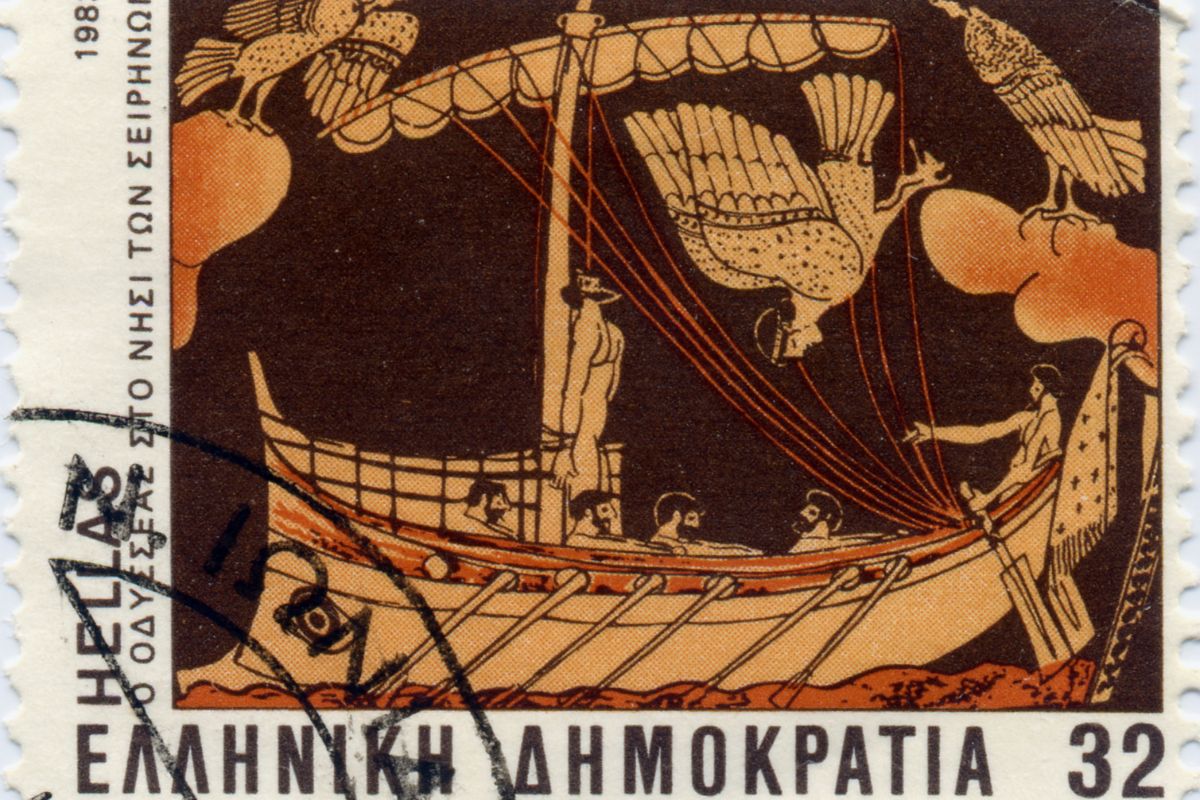
The Odyssey Connection: Gortyna’s Role in Epic Tales
Gortyna’s historical significance extends beyond its political and cultural influence. The city is intricately connected to ancient Greek mythology, particularly the epic tales of Homer’s Odyssey.
Tracing Odysseus‘ journey: Links to Gortyna
In Homer’s Odyssey, Gortyna plays a significant role in the journey of the hero Odysseus. After the Trojan War, Odysseus and his fleet of ships were blown off course and ended up along the Gortyn coastline. The stormy seas and treacherous reefs tested the resilience and courage of Odysseus and his crew. While the exact locations mentioned in the Odyssey are open to interpretation, archaeologists and historians believe that Gortyna could have been one of the stops on Odysseus‘ journey back to his homeland, Ithaca. This connection between Gortyna and the epic tale of the Odyssey further highlights the historical and mythical importance of the city in ancient Greek culture.
Gortyna stands as a testament to the rich history and cultural depth of Minoan civilization. Through its archaeological treasures, architectural wonders, and mythical connections, Gortyna offers a glimpse into a world where art, law, and spirituality intersect. The legacy of Gortyna’s past continues to shape our understanding of ancient Crete. It also inspires narratives that bridge the ancient with the contemporary. Journey through time at Gortyna to unravel the secrets of Minoan Crete. Where each artifact and inscription tells a story waiting to be discovered.
Frequently Asked Questions
Can you visit the archaeological sites of Gortyna today?
Yes, visitors can explore the archaeological sites of Gortyna today. These sites offer a glimpse into the history and culture of ancient Crete. Allowing visitors to walk in the footsteps of ancient civilizations.
